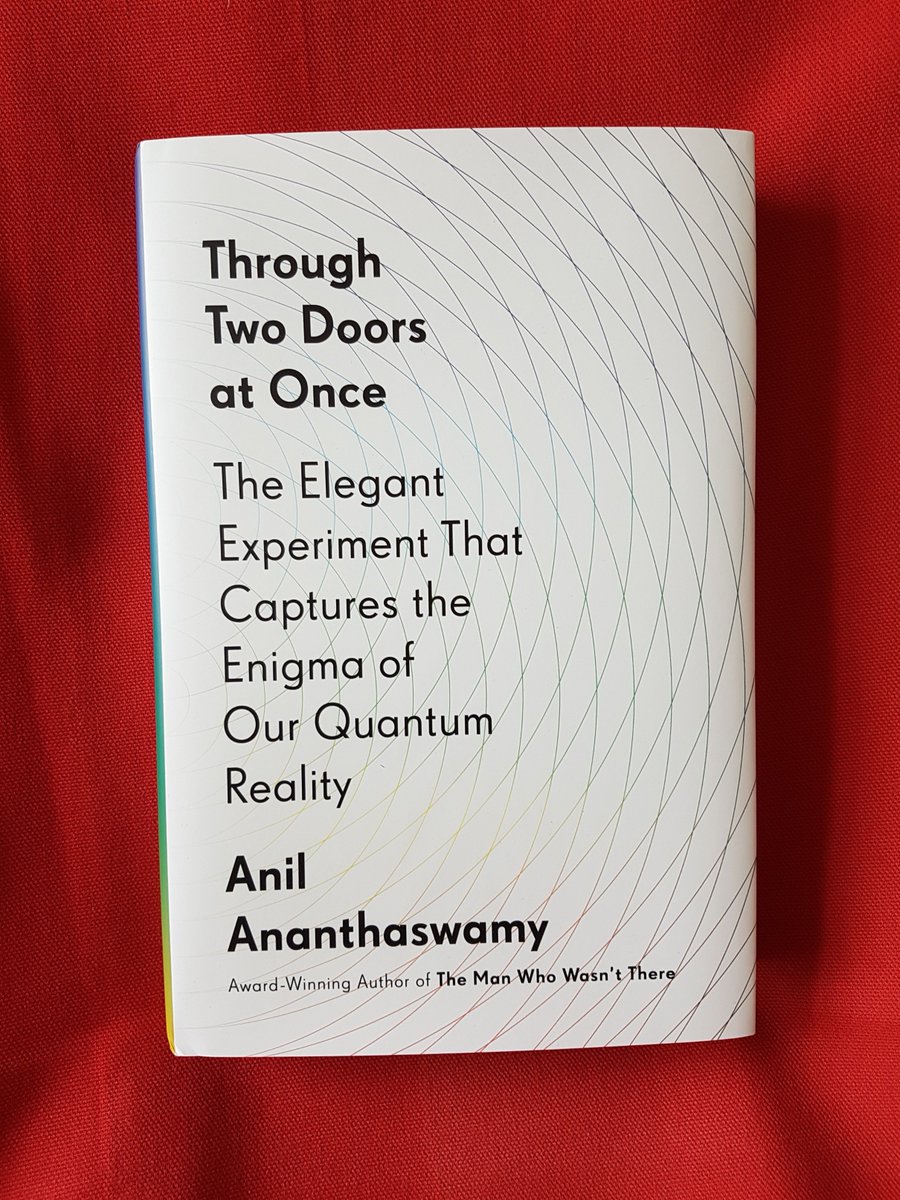
1/20 #QuantumPhysics: Test your grasp of the double-slit experiment with this thread. Answer the polls as they come up and then read on to understand the central mystery of the #quantum world (images in this thread © Anil Ananthaswamy, Through Two Doors at Once, @DuttonBooks ) 

2/20 We'll build up towards a simple, special version of the double-slit experiment, one that is often used in physics labs. It starts with something called a beamsplitter, or a half-silvered mirror, which reflects half the light and transmits half the light. 

3/20 #QuantumPhysics tells us that light is made of individual quanta, or particles. What do you think will happen when a single particle of light, or photon, encounters the beamsplitter shown above?
4/20 #QuantumPhysics says a photon is indivisible, so it's either reflected or transmitted by the beamsplitter, with equal probability. Let's add photon detectors at the ends of each path. The two setups below are similar; one has full mirrors to turn the paths at right angles 



5/20 Now, if you send 10,000 photons one-by-one into the apparatus above, what do you think will happen? #QuantumPhysics
6/20 The answer: Half go to D1, half go to D2. If D1 clicks, the photon was reflected. If D2 clicks, it was transmitted. Now, add another beamsplitter, exactly where the two paths cross. Let's ensure that the two paths (R and T) between the two beamsplitters are of equal length 

7/20 In the setup above, a photon that's reflected or transmitted by the first beamsplitter can be reflected or transmitted by the second beamsplitter. Now, send a photon into the apparatus. If D1 clicks, which path did the photon take out of the first beamsplitter?
8/20 The answer: There's no way to tell. The photon that reaches D1 could have been reflected first and transmitted next or transmitted first and reflected next. Similarly, the path to D2 involves two reflections or two transmissions. The stage is set for #quantum weirdness
9/20 Now, if you send 10,000 photons one-by-one into the apparatus with two beamsplitters, what do you expect? Remember the two paths between the two beamsplitters are of the exact same length
10/20 The answer: All go to D1. How is that possible? The answer confounds normal logic. According to #QuantumPhysics, since there's no way to tell which path a photon takes, each photon enters a #quantum superposition of being in both paths after the first beamsplitter
11/20 The two paths recombine at the second beamsplitter and there's interference. Consider the path to D1. It involves one reflection and one transmission. Waves traveling along those two paths will be in phase--they line up crest to crest, so there's constructive interference
12/20 But the path to D2 involves either two transmissions or two reflections. The path with two reflections will lag the path with two transmissions such that waves traveling along those paths will interfere destructively, the crests of one will line up with troughs of the other 



13/20 The net effect is that all light goes to D1 (constructive interference) and nothing goes to D2 (destructive interference). This is fine when there's lots of light and you can treat it as a wave that splits into two paths. But the same thing happens with a single photon!
14/20 It's "as if" a single photon is splitting into two and interfering with itself. But we know a single photon cannot be split into two. So what's going through both paths and interfering? Therein lies the mystery of #QuantumPhysics, and it's embodied in this simple experiment
15/20 We just built a Mach-Zehnder interferometer (MZI), and it's a special case of the double-slit experiment (DSE). The photon has the choice of taking one of two paths (or the choice of going through one of two slits in the classic DSE). Both setups induce interference 

16/20 The Mach-Zehnder interferometer makes possible some cool experiments, like John Wheeler's delayed-choice experiment. We have a choice of whether to observe the photon's wave nature (by adding the second beamsplitter) or its particle nature (without the 2nd beamsplitter) 



17/20 What if we delay the choice of whether or not to add the 2nd beamsplitter (BS) until after the photon has crossed the first BS? Turns out it doesn't matter when you add the 2nd BS. The photon will display its wave nature if it finds a 2nd BS, its particle nature otherwise
18/20 The choice of apparatus determines the face of nature one sees (wave or particle). This is wave-particle duality at its cleanest. If you try to discern which path a photon takes (by removing the second beamsplitter), it acts like a particle, otherwise it acts like a wave
19/20 The Mach-Zehnder interferometer, and by extension the classic double-slit experiment, is at the heart of many fabulous experiments, such as the quantum eraser, which expose the mysteries of #QuantumPhysics, including the measurement problem, indeterminism, non-locality etc.
20/20 Even alternatives to standard #quantum mechanics can be understood by trying to make sense of the double-slit experiment, including Bohmian mechanics, the Many Worlds interpretation, and objective collapse theories, all explained in Through Two Doors at Once @DuttonBooks 

• • •
Missing some Tweet in this thread? You can try to
force a refresh


